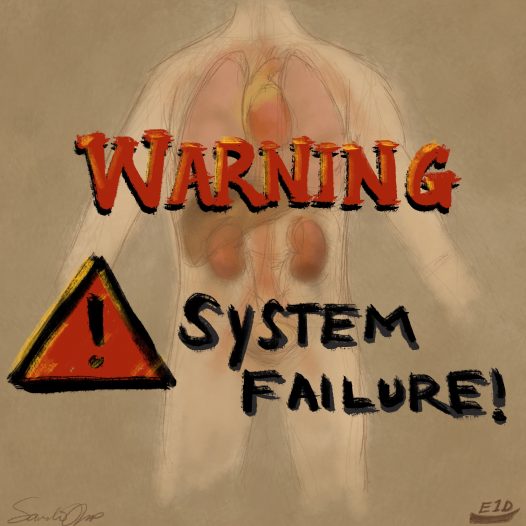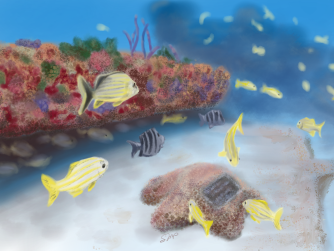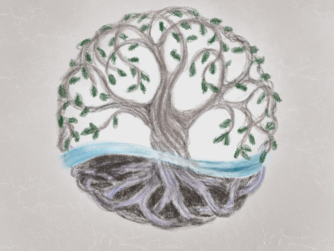This is the fourth of a series of talks about the last hours of living with the focus this week on organ failure at the end of life. When at the end of life, the body is shutting down, there is a decrease in blood moving through the blood vessels in an organ or tissue, and a resulting shutdown of the major organs. These changes are called multi system organ failure and not compatible with life. This series not only tells you how a body goes through the process of dying, but why these changes are occurring.
Multisystem Organ Failure
When at the end of life, the body is shutting down, there is a decrease in blood moving through the blood vessels in an organ or tissue. and a resulting shutdown of the major organs (e.g., liver and kidney). Decreased cardiac output and intravascular volume (volume of blood in a patient’s circulatory system) result in tachycardia and hypotension. Additionally, the body will conserve blood volume for vital organs, which results in cooling of the arms and legs (as the body conserves heat) and a lack of oxygen causing skin to have a bluish color. The skin may therefore become mottled and discolored, which is normal before death and a sign that it is imminent. Mottling is typically seen on the earlobes and the soles of the feet before other areas. Mottling is livedo reticularis in Latin, is skin that has patchy and irregular colors. The skin may have red and purple marks, streaks, or spots. It may also have a marbled appearance with different colors.
Urine output is greatly diminished and there can be a loss of the ability to control urine release resulting in urinary or fecal incontinence. It may be a good idea to insert a urinary catheter to reduce the need for frequent bedding changes and to prevent skin breakdown. The catheter also helps the continent patient conserve energy by removing the need to use a bedpan or urinal.
Neurological dysfunction is a result of multiple, concurrent, and nonreversible organ failure. Consequently, the patient may experience reduced blood circulation to the brain, decreased oxygen in the blood hypoxemia, metabolic imbalances, acidosis, accumulation of toxins from renal and hepatic failure, and sepsis (Ferrell et al., 1999). The net effect of these changes may be a decreased level of consciousness or terminal delirium.
Resources:
- S1E21: Artificial Food and Fluids
- S2E26: What you need to know about pain, fatigue and skin at the last hours of living
- S2E27: What you need to know about eating and drinking in last hours of living
- S2E28: How to manage difficulty breathing in last hours of living
- S2E29: How do you decide if it is time for hospice care?
- S1E32: Remembering the Dead – Day of the Dead Memorial Tradition
- Mottled Skin Before Death: What Is It? (Crossroads Hospice & Palliative Care)
- Signs of Approaching Death (Hospice Foundation of America)
- End of Life Timeline: Signs & Symptoms of the Dying Process (Omni Care Hospice)
Come Friend Death
Sam Magill shared a poem with us about Death, which is not always unwelcome, especially after a long, painful illness.

Sam Magill’s verse came from Fully Human, a collection of poems, in print and audio versions, illuminating what it means to be human in our times. Sam s rich and poetic metaphors have been wonderfully received by clients where Sam has used his work to help people explore life s challenges and moments of grace. Sam is best known for his long career in organization development and leadership coaching and his poetry has added a richness rarely found in the world of leadership. If you enjoyed this, visit Amazon for a book or audio CD.
Recipe of the Week
We’re getting ready for Halloween around here with two ghoulish recipes! The first is Halloweeño Jalapeño Popper Mummies from The Hopeless Housewife. It’s a new twist (literally!) on cheese-stuffed jalapeño, wrapped in crescent roll strips. Head over to the website for the full recipe.
And while you’re making those cute little poppers, you of course need a drink. How about a Vampire Martini?











